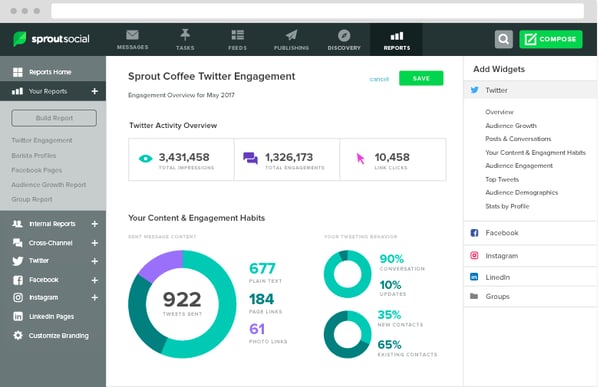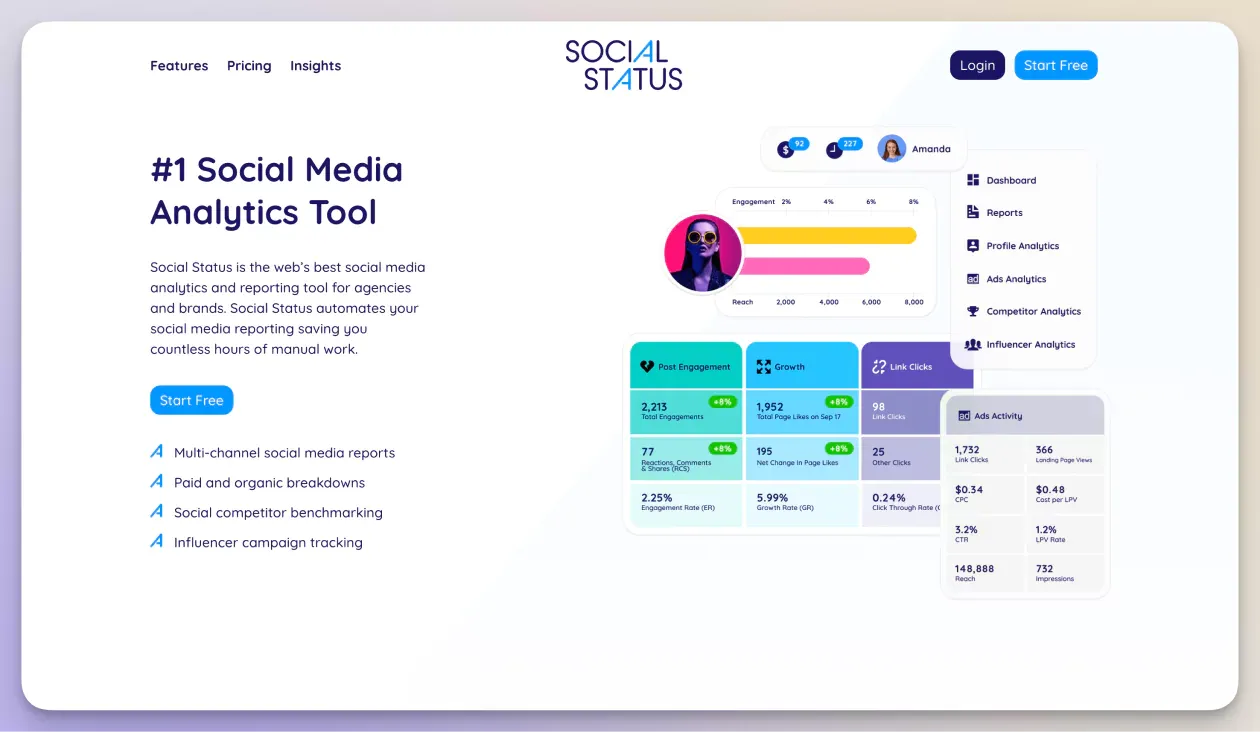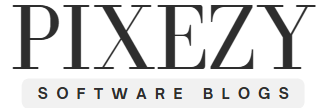Social media plays a big role in our lives today. Analyzing social media data is crucial for businesses.
Social Media Analytics Tools help companies understand their audience. They provide insights into what people like, share, and comment on. This information helps brands improve their strategies. These tools can track engagement, measure performance, and identify trends. They are essential for making informed decisions.
By using analytics tools, businesses can stay ahead in a competitive market. So, let’s explore how these tools can benefit your social media efforts.
Introduction To Social Media Analytics
Social Media Analytics is the process of collecting and analyzing data from social media platforms. It helps brands understand their audience, measure the success of their campaigns, and make informed decisions. In today’s digital age, social media analytics tools are vital for businesses aiming to grow their online presence.
Importance In Modern Marketing
Social media analytics tools play a crucial role in modern marketing. They provide insights into customer behavior, preferences, and trends. These insights help businesses tailor their marketing strategies to better meet the needs of their audience. Without these tools, companies would struggle to understand what resonates with their audience and what doesn’t.
Additionally, social media analytics can help businesses measure the return on investment (ROI) of their marketing efforts. By tracking engagement, reach, and other key metrics, companies can see which strategies are working and which need improvement. This data-driven approach leads to more effective and efficient marketing campaigns.
Key Metrics To Track
Tracking the right metrics is essential for making the most of social media analytics tools. Here are some of the key metrics to focus on:
- Engagement: This includes likes, comments, shares, and other interactions. High engagement indicates that your content is resonating with your audience.
- Reach: The number of unique users who have seen your content. A higher reach means your content is being exposed to a larger audience.
- Impressions: The total number of times your content is displayed. Unlike reach, impressions can count multiple views by the same user.
- Follower Growth: The rate at which you gain or lose followers. Steady growth indicates a healthy and expanding audience.
- Click-Through Rate (CTR): The percentage of users who clicked on a link in your post. A higher CTR indicates that your call-to-action is effective.
- Conversion Rate: The percentage of users who take a desired action after clicking on your post. This could be making a purchase, signing up for a newsletter, or another goal.
| Metric | Description |
|---|---|
| Engagement | Likes, comments, shares, and interactions. |
| Reach | Unique users who have seen your content. |
| Impressions | Total times your content is displayed. |
| Follower Growth | Rate of gaining or losing followers. |
| Click-Through Rate (CTR) | Percentage of users who clicked a link. |
| Conversion Rate | Percentage of users who took a desired action. |

Credit: blog.hubspot.com
Top Social Media Analytics Tools
Social media analytics tools are essential for understanding your audience. They help track performance, engagement, and trends. Knowing which tools to use can make a big difference.
Overview Of Leading Platforms
Several social media analytics tools stand out. Each offers unique features. Some of the leading platforms include Sprout Social, Hootsuite, and Buffer.
Sprout Social is known for its user-friendly interface. It provides detailed reports and insights. Hootsuite is popular for managing multiple accounts. It offers robust scheduling options. Buffer is favored for its simplicity. It focuses on scheduling and basic analytics.
Comparing Features And Pricing
Sprout Social offers comprehensive analytics. It includes engagement, audience growth, and content performance. Pricing starts at $99 per month. Hootsuite provides a range of features, including analytics and scheduling. It starts at $19 per month. Buffer offers basic analytics and scheduling. Its pricing starts at $15 per month.
Each tool has its strengths. Sprout Social is ideal for detailed insights. Hootsuite is best for managing multiple platforms. Buffer is great for simple scheduling and analytics. Choose the tool that fits your needs and budget.
Data Collection And Analysis
Data collection and analysis are critical parts of social media analytics tools. These processes help businesses understand their audience. They also allow for better decision-making. Let’s explore how these tools gather accurate data and analyze user behavior.
Gathering Accurate Data
Social media analytics tools collect data from various platforms. They pull information from sources like Facebook, Twitter, and Instagram. This data includes likes, comments, shares, and more. The goal is to ensure all data is accurate and relevant.
Accuracy is key. Tools use algorithms to filter out irrelevant data. They focus on meaningful interactions. This helps businesses get a clear picture of user engagement.
Here are some ways these tools gather data:
- APIs: Access and collect data directly from social media platforms.
- Web Scraping: Extract data from web pages.
- Integrations: Connect with other tools for more comprehensive data.
Analyzing User Behavior
Once data is collected, the next step is analysis. This helps businesses understand how users interact with their content. Analysis can reveal patterns and trends.
Key aspects of user behavior analysis include:
- Engagement Rates: Measure how users interact with posts.
- Content Performance: Identify which content performs best.
- Audience Demographics: Understand the age, gender, and location of followers.
Analyzing user behavior helps businesses refine their strategies. They can create content that resonates more with their audience. This leads to better engagement and higher returns.
Effective tools provide visual reports. These make it easier to interpret data. Graphs, charts, and tables summarize information at a glance.
| Metric | Description |
|---|---|
| Engagement Rate | Percentage of users who interact with content. |
| Reach | Number of unique users who see the content. |
| Impressions | Total views including repeat views. |
These insights are invaluable. They enable data-driven decisions. Businesses can optimize their social media presence for better results.
Measuring Engagement And Reach
Understanding how your content performs on social media is vital. Engagement and reach are two key metrics to track. Engagement measures how users interact with your content. Reach shows how many people see your content. Together, they provide insight into your social media success.
Tracking Likes, Shares, And Comments
Engagement metrics include likes, shares, and comments. These interactions show how users feel about your posts. Likes are a simple way for users to show approval. They are quick and easy, but they still count.
Shares are more valuable. When users share your content, they spread your message. This increases your reach. Comments are even more meaningful. They show users are taking the time to engage. Comments can also provide feedback and start conversations.
| Metric | Importance |
|---|---|
| Likes | Shows approval |
| Shares | Increases reach |
| Comments | Indicates deeper engagement |
Understanding Audience Demographics
Knowing who interacts with your content is crucial. Audience demographics provide valuable insights. They help you tailor your content to your audience’s needs. Demographics include age, gender, location, and interests.
- Age: Different age groups prefer different content.
- Gender: Tailor your message to appeal to a specific gender.
- Location: Content may perform better in certain regions.
- Interests: Knowing interests helps create relevant content.
Use analytics tools to track these demographics. Adjust your strategy based on the data. This will help you create more engaging content.
Sentiment Analysis
Sentiment Analysis is a crucial aspect of social media analytics. It helps businesses understand how users feel about their brand. By analyzing posts, comments, and mentions, companies can gauge public opinion. This process involves evaluating emotions and opinions expressed in online content.
Monitoring Brand Sentiment
Monitoring brand sentiment is essential for maintaining a positive image. It allows businesses to track real-time reactions. By understanding customer feelings, companies can make informed decisions. Negative sentiment alerts can help address issues promptly. Positive sentiment can highlight successful campaigns or strategies.
Brands can use sentiment analysis to identify trends over time. For example, a sudden drop in positive sentiment might indicate a problem. Consistently positive feedback can reinforce successful practices. Regular monitoring helps keep a pulse on public perception.
Tools For Sentiment Analysis
Various tools assist in sentiment analysis. These tools automate the process of evaluating social media content. Below is a table outlining some popular sentiment analysis tools:
| Tool Name | Features | Pricing |
|---|---|---|
| Hootsuite Insights | Real-time sentiment tracking, customizable reports | Starting at $19/month |
| Brandwatch | Advanced sentiment analysis, in-depth analytics | Request a quote |
| Talkwalker | AI-powered sentiment analysis, social listening | Starting at $9,600/year |
| Sprout Social | Sentiment trends, social media engagement | Starting at $99/month |
These tools offer different features and pricing options. Hootsuite Insights provides real-time tracking and customizable reports. Brandwatch offers advanced sentiment analysis and in-depth analytics. Talkwalker uses AI to power its sentiment analysis and social listening. Sprout Social allows users to track sentiment trends and engage with their audience.
Choosing the right tool depends on your specific needs. Consider factors like budget, required features, and ease of use. Effective sentiment analysis can greatly impact your brand’s success.

Credit: www.socialmediatoday.com
Content Performance Evaluation
Understanding how your content performs on social media is key to success. Social media analytics tools provide crucial insights. These tools help you measure engagement, reach, and other performance metrics. Evaluating content performance allows you to refine your strategy and create better content.
Identifying Top-performing Content
To improve your strategy, you need to identify your best content. Social media analytics tools help you do this effectively. Look at metrics like likes, shares, and comments. These metrics show which posts resonate with your audience.
Use the data to create a list of top-performing posts. Here is an example table:
| Post | Likes | Shares | Comments |
|---|---|---|---|
| Post 1 | 150 | 30 | 20 |
| Post 2 | 200 | 50 | 40 |
With this information, you can spot trends. Recognize what types of posts perform best. This helps you replicate success in future posts.
Improving Future Content Strategy
Once you know what works, you can improve your content strategy. Focus on creating content similar to your top-performing posts. Here are some steps:
- Analyze top content: Find common themes or formats.
- Engage with followers: Respond to comments and questions.
- Experiment: Try new content types and track their performance.
Keep an eye on your analytics. Use the data to adjust your strategy. This ensures your content remains relevant and engaging.
By consistently evaluating your content performance, you can refine your approach. This leads to better engagement and growth on social media.
Leveraging Analytics For Campaigns
Understanding social media analytics is essential for effective campaigns. By leveraging analytics, businesses can make informed decisions. This helps in optimizing ad spend and targeting the right audience. Let’s explore how analytics tools can assist in these areas.
Optimizing Ad Spend
Ad spend optimization ensures that every dollar counts. Analytics tools provide insights into which ads perform best. This data helps in reallocating funds to high-performing ads.
Using these tools, businesses can:
- Track ad performance
- Identify top-performing content
- Adjust budgets in real-time
For example, a table can show how ad spend is distributed:
| Campaign | Ad Spend | ROI |
|---|---|---|
| Campaign A | $500 | 150% |
| Campaign B | $300 | 100% |
| Campaign C | $200 | 200% |
This table helps in deciding where to increase investment. Businesses can focus on ads with the highest ROI.
Targeting The Right Audience
Targeting the right audience is crucial for campaign success. Analytics tools help in understanding audience demographics. This includes age, gender, location, and interests.
Here are some steps to target effectively:
- Analyze audience data
- Segment the audience
- Create tailored content
Using this method, businesses can ensure their message reaches the right people. For instance, a fashion brand might find that young adults engage more with their ads. They can then tailor their content to this group.
In conclusion, leveraging social media analytics tools can transform campaign strategies. By optimizing ad spend and targeting the right audience, businesses can achieve better results and higher ROI.
Future Trends In Social Media Analytics
The world of social media analytics is evolving rapidly. New technologies are shaping how we analyze and understand social media data. These advancements help businesses make better decisions. Let’s explore some future trends in social media analytics.
Ai And Machine Learning
AI and machine learning are transforming social media analytics. These technologies help analyze vast amounts of data quickly. They can identify patterns and trends that humans might miss. AI-driven tools can also predict user behavior. This helps businesses tailor their strategies effectively.
Predictive Analytics
Predictive analytics is another emerging trend. It uses historical data to forecast future trends. This can be incredibly valuable for businesses. Predictive models can suggest the best times to post content. They can also anticipate customer needs and preferences. This leads to more targeted and effective marketing campaigns.

Credit: www.socialinsider.io
Frequently Asked Questions
What Are Social Media Analytics Tools?
Social media analytics tools help track, analyze, and report social media performance. They provide insights into audience behavior and engagement.
Why Use Social Media Analytics Tools?
Using these tools helps optimize social media strategies. They provide valuable data that improves content effectiveness and audience targeting.
Which Social Media Analytics Tools Are Best?
Top tools include Hootsuite, Sprout Social, and Google Analytics. Each offers unique features for different needs and budgets.
How Do Social Media Analytics Tools Work?
These tools collect data from social media platforms. They then analyze metrics like engagement, reach, and demographics to provide insights.
Conclusion
Social media analytics tools are essential for tracking your online performance. They provide valuable insights into user behavior. These tools help in making informed decisions. Understand your audience better. Enhance your social media strategy. Stay ahead of trends. Pick the right tool for your needs.
Start analyzing today. Boost your engagement. Increase your reach. Make data-driven choices effortlessly.

I am a passionate digital marketer with a strong expertise in SEO and article writing. With years of experience in crafting compelling content and optimizing it for search engines, I help businesses enhance their online visibility and drive organic traffic. Whether it’s creating engaging blog posts or implementing effective SEO strategies, I am dedicated to delivering results that make an impact.
